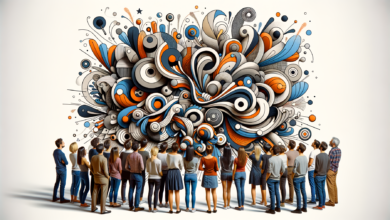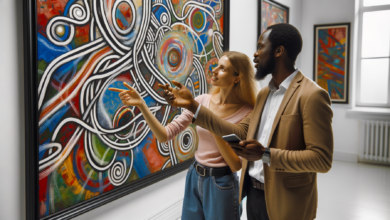Subconscious Elements of Attraction

Have you ever felt drawn to someone without quite understanding why? There’s a good chance that underneath the surface, a complex web of subconscious elements was at play, influencing your feelings of attraction. These subtle, often unnoticed factors can be powerful determinants in the landscape of human connections. So let’s explore these subconscious elements of attraction to better understand the mysteries of our own desires.
Understanding the Subconscious Mind
To grasp the nuances of attraction, it’s crucial to first consider the role of the subconscious mind. This part of our brain operates below the level of conscious awareness, controlling many aspects of our behavior and emotions. In the realm of attraction, our subconscious is often the silent choreographer, guiding us through the dance of romantic or platonic interest towards others.
The subconscious is like a vast ocean where many of our experiences, memories, and learned behaviors are stored. When it comes to attraction, these hidden depths can contain treasures or traps – instincts and patterns that influence who we find alluring.
Physical Appearance and Beyond
Certainly, physical appearance plays a significant role in initial attraction. This typically involves observable features such as facial symmetry, body shape, and overall health, which are commonly associated with genetic fitness and reproductive potential. Yet, the subconscious plays a subtler part, too. For example, sometimes we are attracted to features that resemble those of our parents or people who have been important in our lives, a phenomenon sometimes referred to as ‘imprinting’.
Scent and Pheromones
Beyond what meets the eye, our sense of smell contributes subconsciously to attraction as well. Pheromones, chemical signals emitted by the body, can send subconscious cues about compatibility, fertility, and genetic diversity. Although much debate surrounds the extent of pheromonal influence in humans, it’s undisputed that scent plays a role in attraction, albeit one that we may not consciously realize.
Social and Cultural Influences
Attraction isn’t just a game of biology; social and cultural factors bear heavily upon our subconscious preferences. From an early age, we’re exposed to societal standards of beauty and desirability through media and cultural narratives. Think about the portrayal of romance in movies and literature – often, these stories can shape our expectations and ideals in partners.
The values and beliefs we’re raised with also leave an indelible mark on our subconscious. Family, peers, and cultural contexts inform our notions of what is attractive, giving rise to preferences that align with our own social and cultural background.
Status and Power
There’s an undeniable allure to individuals who possess status or power, and this isn’t just about wealth or rank. Our subconscious can perceive power through confidence, leadership qualities, and social influence, triggering attraction based on the perception of security or advantage that association with such individuals might confer.
Emotional Needs and Personal Experiences
Our unique personal experiences and emotional needs hold considerable sway over whom we find attractive. For instance, someone with a nurturing nature might be particularly appealing to individuals who crave emotional support due to past experiences. Similarly, a person who embodies characteristics of independence and strength might attract those who value self-reliance and fortitude.
Attachment Styles
Attachment theory proposes that early interactions with caregivers shape our expectations of love and connection in adulthood. These attachment styles can direct our subconscious towards individuals who either complement or reinforce our patterns of attachment, impacting our feelings of attraction in complex ways.
Similarity and Complementarity
Do opposites really attract? The answer isn’t straightforward. Subconsciously, we may be drawn to those who share similar traits, values, or interests as we do. This sense of similarity can foster comfort and connection. However, sometimes it’s the differences in others that captivate us, filling gaps in our personality or life experience, suggesting that a balance between similarity and complementarity can be compelling to our subconscious attractions.
Mirroring and Body Language
Subtle cues like body language play a pivotal role in attraction as well. Our subconscious quickly picks up on nonverbal signals such as mirroring – when someone subconsciously copies our gestures and posture. This kind of mimicry can create a powerful, albeit unconscious, bond of attraction as it signals empathy and rapport.
Psychological Factors
Our psychological makeup, which includes personal traits such as confidence, humor, and intelligence, also contributes to the allure we feel toward others. A quick wit or a shared sense of humor can generate a draw that’s hard to put into words, as these qualities speak to mental stimulation and the enjoyment of companionship.
Confidence and Self-Esteem
Confidence can be magnetic. A person who carries themselves with a sure sense of self can ignite attraction, often because high self-esteem is associated with success and positive social outcomes. Conversely, someone with low self-esteem might be less likely to be seen as attractive because it can signify a lack of competence or social desirability to the subconscious mind.
Unconscious Emotional Triggers
Attraction can often surface from unconscious emotional triggers. These can include unresolved emotional issues or patterns that lead us to repeat certain relationship dynamics. Sometimes, these triggers can cause us to be attracted to people who may not necessarily be beneficial for us, as we subconsciously seek to rectify past emotional experiences.
The Role of Mystery and Novelty
The unknown has always been seductive. Our subconscious may be drawn to people who present an air of mystery, as they ignite our curiosity and the desire to discover more. Similarly, the novelty factor plays its part. New experiences or traits we haven’t encountered before can be inherently exciting and attractive, stimulating our brain in unique ways.
Finishing Thoughts
Attraction is an intricate tapestry woven from threads of physical, social, emotional, and psychological factors. By exploring the subconscious elements of this universal human experience, we open the door to a deeper, more nuanced understanding of ourselves and our relationships. Remember, while these elements influence whom we feel drawn to, the conscious choices we make in response to these feelings define the relationships we build. Let’s be mindful of the silent whispers of our subconscious, using our awareness to foster healthier, more meaningful connections with others.




